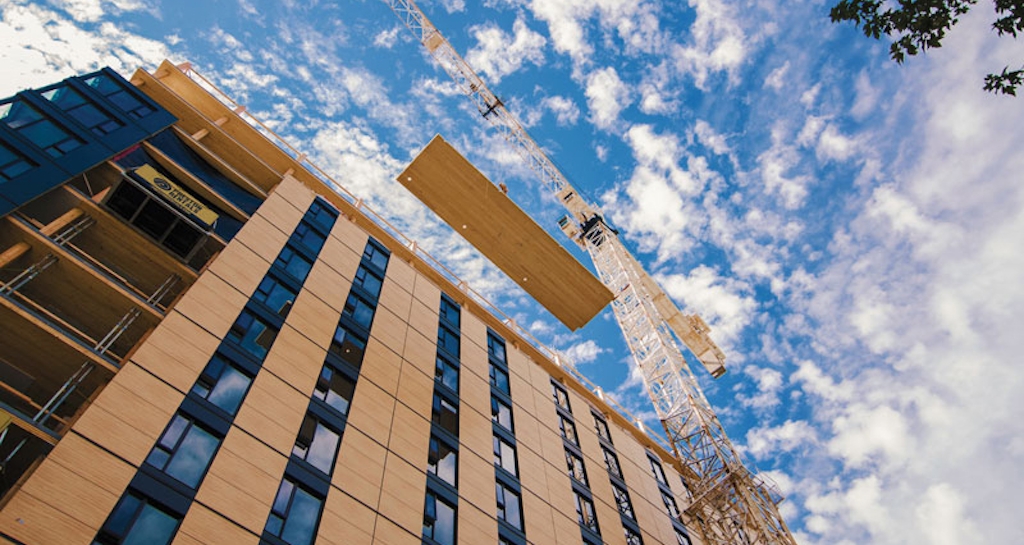Writing by Build It With Wood Project Leader Nicole St. Clair Knobloch, photography by Pollux Chung.
Last year, NEFF commissioned an analysis on the potential for a mill to produce cross-laminated timber (CLT) from New England wood. The work showed that CLT could be a viable regional forest product and building material, so we got to work on next steps: Develop a regional supply chain and get buildings built.
We knew NEFF and our Build It With Wood initiative could make a strong environmental and economic case for building taller wood buildings in New England, and we were also determined to start developing a local mass timber supply chain and to engage interested developers, contractors, and architects. The results to date are spectacularly encouraging.
Just this spring, two companies announced plans to open CLT plants in Maine. A third entrepreneur has chosen a site in rural Massachusetts and is actively seeking investors. As I write, the budget bill making its way through the Massachusetts legislature contains $3 million for investment in such a plant. The State of Maine invested a similar amount to attract its CLT plants earlier this year. Clearly, our next step—develop a regional supply chain—is well underway.
We’re making progress with the construction of new wood buildings too, as design teams and contractors are showing interest in moving toward mass timber. As the costs of steel and concrete continue to rise, we’re encouraging exercises in how to price a structure that uses mass timber in their place. NEFF is also working to connect developers and contractors with a shared interest in mass timber, and to develop policies or financial incentives that might make carbon-sequestering buildings a reality in our metro areas.
It seems that each week brings news of an exciting new partnership, including with MIT architect John Klein, whose Spring Studio in the Master’s of Architecture program brought students and faculty together with MassPort to develop mass-timber affordable housing designs for Boston’s piers.
At the same time, NEFF is keeping an eye on how these projects can truly help mitigate climate change. Our modelers in Maine are conducting a Life Cycle Analysis of the carbon sequestration potential of a mass timber building, focusing—as no one else has done—on the in-forest impacts of harvesting for CLT and other mass timber products. Our intention is to develop industry standards that will maximize forest health and the carbon benefits provided by the forests utilized in manufacturing these new products.
NEFF intends to bring mass timber on a mass scale to New England, and to do it in a way that serves as a model for the rest of the country and the world.


